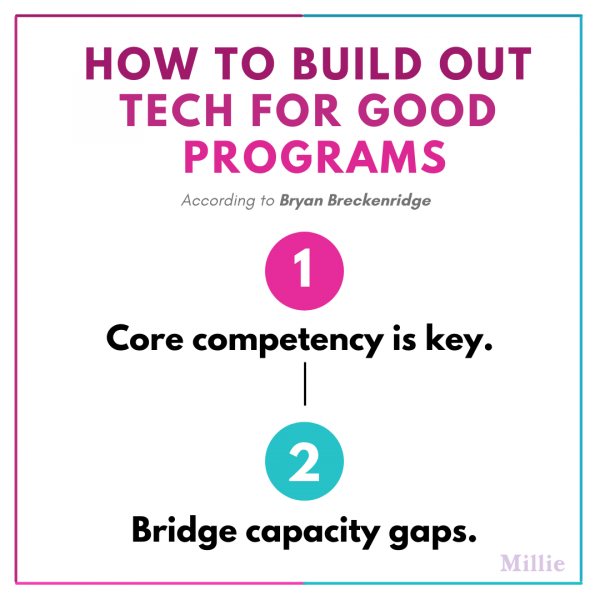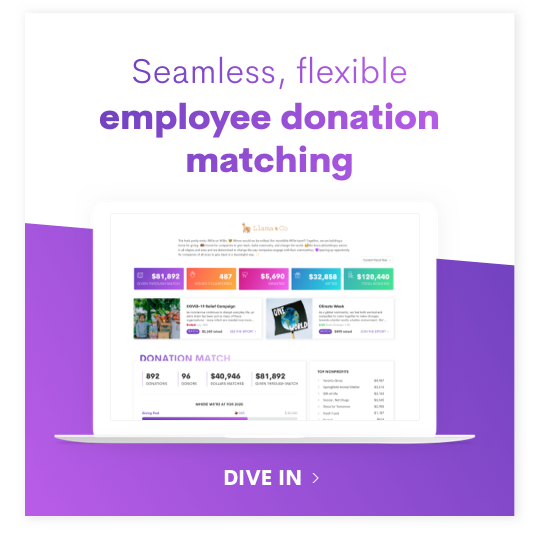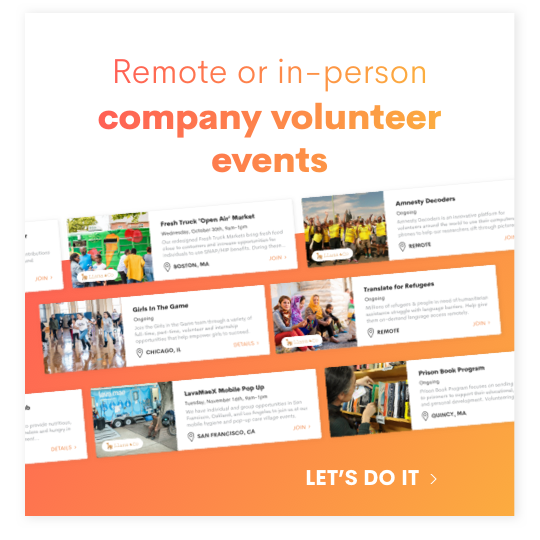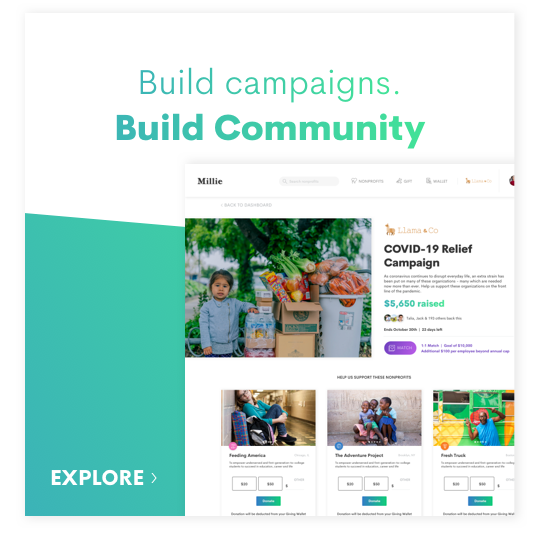During a recent episode of Changemakers From Within, we were so inspired and impressed by Bryan Breckenridge’s work building out social impact programs at many iconic Silicon Valley Companies including Salesforce, LinkedIn, Box and Zillow. We asked him what his most important 1 or 2 tips were for listeners wanting to build our their own product or tech for good programs. Here’s what he had to say and some great examples of brands already doing it.
1. “Core competency is key. “
Be certain that your program and philanthropic structures align with what your company does best. If you have a capacity or a competency that the nonprofit world struggles to have because the barriers are too high, utilize and exploit it. That’s where you can really contribute and make a difference.
Zendesk
One company that has definitely used their core competency for good is Zendesk, which builds support, sales, and customer engagement software designed to foster better customer relationships. Having a core competency in customer service software, Zendesk partnered with the International Rescue Committee. The International Rescue Committee works to help those whose lives have been turned upside down by conflict and disaster, ultimately allowing them to regain control of their future. Knowing that refugees are going to need immediate information and constant support in determining their next steps, Zendesk realized how high impact having a help desk would be to the organization. Using Zendesk, the IRC is better able to facilitate continued case management of families from the time they enter the U.S., making the process less stressful. Ultimately, Zendesk helped strengthen the systems that allow the IRC to provide services to families in their asylum process, ensuring that no asylum seeker is left behind.
2. “Bridge capacity gaps.”
Whether it be your thought leadership, your employees’ time, or technology, figure out how you can scale the capacity of the nonprofit sector with your capabilities. Ask yourself, “with the tools and capabilities I can provide, which nonprofits would utilize this to the best of their ability?” Remember that it’s not always the work that you’re going to do directly that counts. Rather, plug capacity gaps in order to help empower the heroes that are already on the field doing this work and meet them where they are.
Spreetail
While not directly in the tech industry, one company that has definitely worked to bridge capacity gaps is Spreetail, an e-commerce company that connects brands with customers wherever they love to shop online. Spreetail’s strength lies in its inventory, supply chain, and distribution management. When Spreetail wanted to make a difference, they looked at the communities they were based in to determine what needs were not being met. In Lincoln, Nebraska, Spreetail’s capabilities found a perfect match. At that time, Bryan Seck, the Homeless Outreach Coordinator for Lincoln Public Schools, discovered that when families transitioned from homelessness to stable living, they often couldn’t afford a bed, as the majority of their income went towards the security deposit and rent. Spreetail was able to take advantage of the relations they have with vendors for large products and utilize their supply chain and network to provide mattresses to these families in need. Founded in 2016, Spreetail’s New Beginnings Project is now committed to delivering 500 mattresses every year. Ultimately, by identifying a unique problem and using their specific capacities to bridge the barrier, Spreetail helped hundreds of families transitioning out of homelessness.

Zendesk and Spreetail are both incredible examples of social impact programming and utilizing one’s product or competencies for good. Hopefully, these stories shed some light on Bryan’s powerful pieces of advice. More importantly, they make it clear that with the right perspective, any business is capable of leading meaningful initiatives like these ones. To hear more of the amazing tips Bryan had to share, be sure to listen to the full podcast episode below:
Weaving Social Impact Into Your Company’s DNA with Bryan Breckenridge



